5 takeaways for marketers from Google’s Q4 2019 earnings
YouTube disclosures finally shed some light the video giant’s advertising trend.
Please visit Search Engine Land for the full article.
The steps to financial freedom are here. Visit our site if you want to be financially free and live a wealthy lifestyle
YouTube disclosures finally shed some light the video giant’s advertising trend.
Please visit Search Engine Land for the full article.
YouTube disclosures finally shed some light the video giant’s advertising trend.
Please visit Search Engine Land for the full article.
One in four people live with a disability in the United States.
That means, if your marketing content excludes people living with a disability, you could be losing out on the potential of converting 61 million people into customers.
I had the opportunity to sit down with Christina Mallon, the Global Head of Inclusive Design and Accessibility at Wunderman Thompson (the largest ad agency in the world), to learn how brands are creating more inclusive products and campaigns to reach an underserved audience.
Christina has worked with major brands, including Microsoft and Tommy Hilfiger, to help them develop accessible products and content for their marketing campaigns. She’s worked on digital marketing campaigns for Tommy Adaptive, and helped build the first-ever Alexa skill for people with disabilities. Her work has received national attention and has been featured on PBS, Fast Company, Forbes, Yahoo!, and more.
Needless to say, I was very lucky to sit down with Christina to learn how marketers should think about accessibility when it comes to building web experiences and content.
Here, we’ll explore Christina’s definition for accessibility, examples of non-accessible marketing, and how you can create more inclusive and accessible marketing content for 2020 and beyond.
Christina shared that the World Health Organization defines a disability as a function of the mismatch between a person’s abilities and the demands of the environment. “The best example I have of this can be found at airports,” she shared.
As you’re de-boarding a plane and heading to baggage claim, many times the baggage claim is in a different wing of the airport. These airports offer both stairs and escalators to help people get to their luggage.
“But why are the only options for getting to the baggage claim stairs and escalators? ” she asked.
In describing her example, Christina said “stairs and escalators are two identical solutions to the same problem.” People in wheelchairs are required to take a different route to baggage claim because they are unable to take the stairs or escalator solution that was designed.
“This everyday occurrence is a design problem,” Christina said.
And as marketers and designers who build digital products and content, we have an opportunity to design something that is accessible for all.
Ultimately, accessibility is an attribute, and inclusive design is a method.
Marketers can make their content accessible by using inclusive design practices. We’ll dive into those, but first — let’s take a look at pieces of content that currently aren’t accessible.
To better understand what inclusive design looks like, Christina shared some examples of accessibility fails, or brands that weren’t meeting the expectation of someone with a disability.
Christina first mentioned Amazon, telling me: “When I was in the UK for business I went on my computer and tried to make a purchase on Amazon. The issue I ran into was that I was unable to use my accessibility voice device on their desktop site.” Noticeably frustrated, she said, “they asked me to leave the desktop site and open amazon on my phone because the phone had built-in accessibility features.”
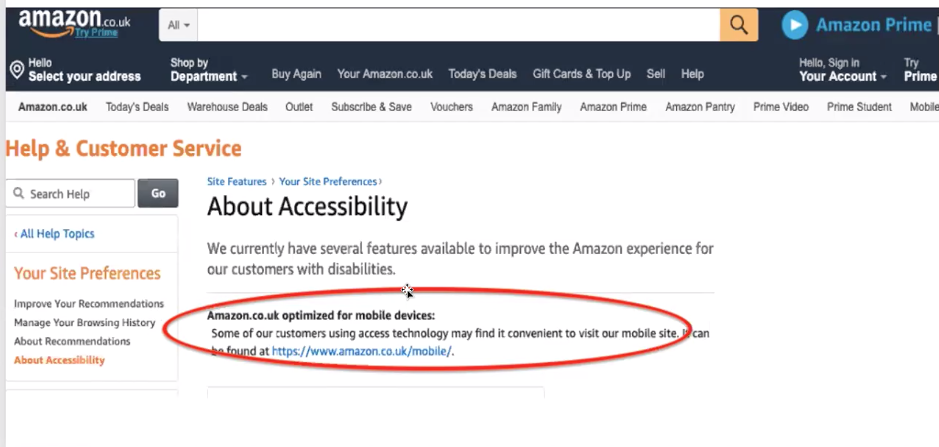
“They don’t care about me. They just want me to use the mobile device instead of making their web experience accessible.” Because of this, Christina makes a majority of her purchases on Jet.com. She told me that physical stores are difficult for someone with mobility challenges and Amazon does not meet her expectations. So, her brand loyalty and purchases go elsewhere.
This is a reminder for product and marketing teams to ensure their desktop and mobile experiences are accessible for all.
Another example of content that is not accessible came from LEGO. The beloved bricks launched a new line of Braille Bricks to help blind students learn how to spell.
This new product is incredible and even got picked up by CBS Morning News and other publications. However, one publication covered the product launch with this video:
“Now” Christina said, “This is a product for blind people and a marketer created a beautiful promotional video. The video has great shots of the product being used by students. It has nice copy animations that explain the use of the product. And an upbeat song to help tell the product story.”
“However, there is one issue.”
I could tell it was a big issue.
“There is no verbal audio,” Christina shared.
Someone who is blind would not be able to consume this promotional video and understand the product that was built for them.
While the video may meet the creative standards of the brand and the requirements for social media videos, it isn’t created with the target audience in-mind.
This is an oversight by the creator, and a reminder for brands to always be mindful of the consumer.
After discussing the video, Christina told me to “make sure that your customer experience is inclusive from end-to-end, including the product and the promotion.”
Once I had a better understanding of accessibility and examples of what to avoid, I asked Christina how marketers can create accessible content going forward — I asked her, “Is there a checklist, or a list of standards for marketers to reference?”
Immediately, Christina replied, “Inclusive design is more than a checklist.”
Instead of going through a checklist of how to make content accessible, Christina shared three principles of inclusive design that can be used by marketers when creating web experiences and content.
“When creating a piece of content or designing a web experience, be mindful of these primary principles.”
Be aware that there are consumers who are vision, hearing, and mobility impaired. Build a piece of content and share your work with them prior to launch. Receive feedback upfront from those audience segments before releasing your campaign to the public.
“I try to have someone who is vision, hearing, and cognitive impaired look at every piece of content before presenting my work to a client,” she shared. “I have been able to find people with disabilities, online, who are interested in working with us.”
If marketers don’t have an opportunity to work alongside people with a disability, they can always test their work against four main questions:
Once a marketer runs their content through these questions, they will have a better understanding of what improvements can be made to simplify the work and make it more accessible.
As marketers, we have the ability to solve customer problems through design and content. By creating content for people with disabilities in mind, our content will be accessible to everyone.
Christina told me, “design for disability, and your work will work for everyone.” It’s critical that accessibility is a part of your design and creation process upfront — and not an afterthought.
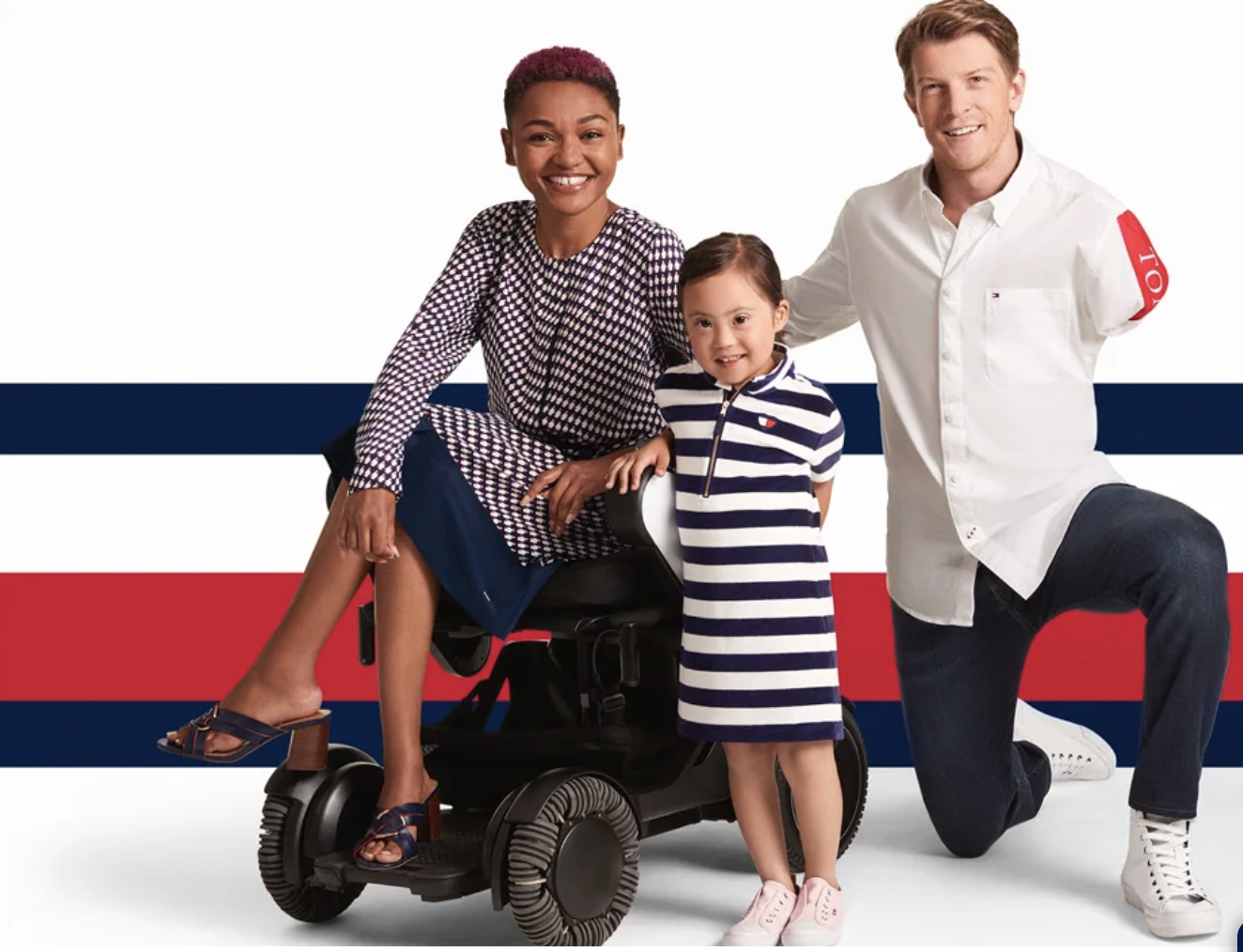
To best articulate her point, Christina shared some consumer products that were designed for people with disabilities but have become a part of mainstream culture:
These product designs for people with disabilities have made their way into daily life for all, demonstrating that by creating for people with disabilities, marketing content has the ability to be adopted by a larger audience.
Creating accessible content and web experiences is an ongoing process. Marketing teams may not have the resources to go back and update all pieces of content that have been created.
However, moving forward, by being mindful of accessibility, marketers can ensure that their content is being built for the largest addressable audience.
I asked Christina for recommended tools that could help marketers get started with creating accessible content. She suggested the following six:
Whether you’re building a new website, producing a product video, or creating a new report marketers need to keep accessibility in mind. Creating content and products that can be accessed by everyone will help you reach new audiences and reach your goals.
Ultimately, using inclusive design can help you reach more potential customers and grow your business — plus, it demonstrates your brands commitment to serving the needs of as many people as possible.
![]()
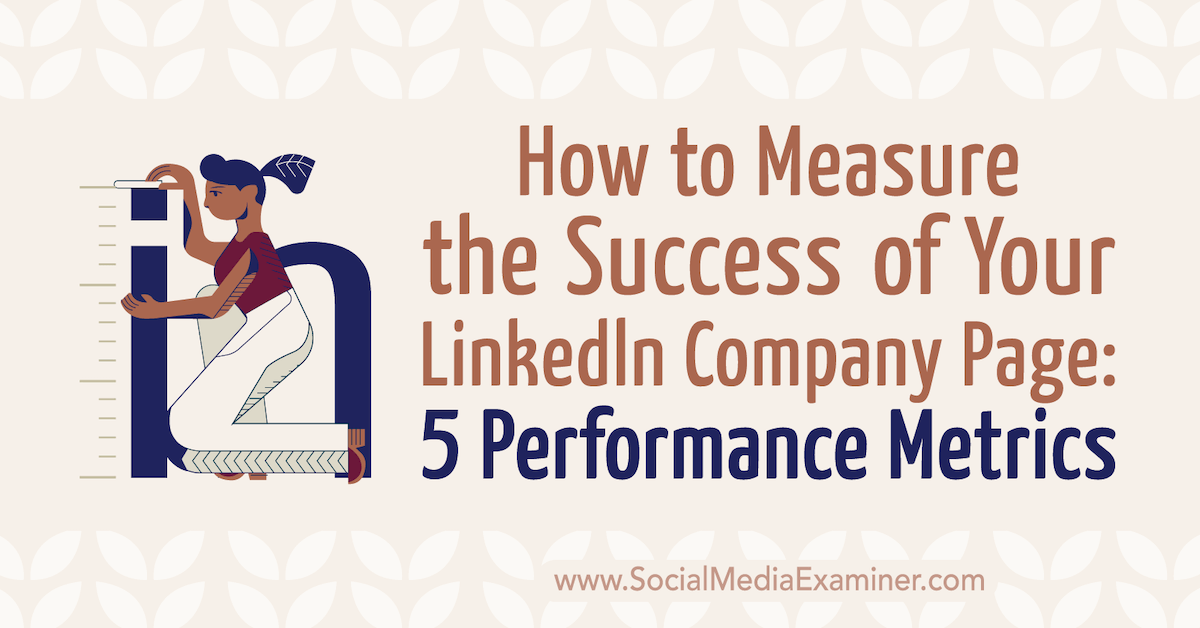
Wondering if your LinkedIn company page is delivering the results you hoped for? Do you know where to find the best data to evaluate your efforts? In this article, you’ll learn how to measure five key performance metrics for your LinkedIn company page. How to Analyze Your LinkedIn Company Page Performance LinkedIn is an essential […]
The post How to Measure the Success of Your LinkedIn Company Page: 5 Performance Metrics appeared first on Social Media Marketing | Social Media Examiner.
Is a billboard an affordable marketing tool for a design firm or copywriter? Don’t laugh it off. I spoke with Bart Bradshaw, host of the Built to Stay podcast, who educated me all about the latest in outdoor advertising. It’s not as expensive as you think and depending on your niche, it could definitely make you stand out. Listen to our companion interview on choosing a niche.
YouTube disclosures finally shed some light the video giant’s advertising trend.
Please visit Search Engine Land for the full article.
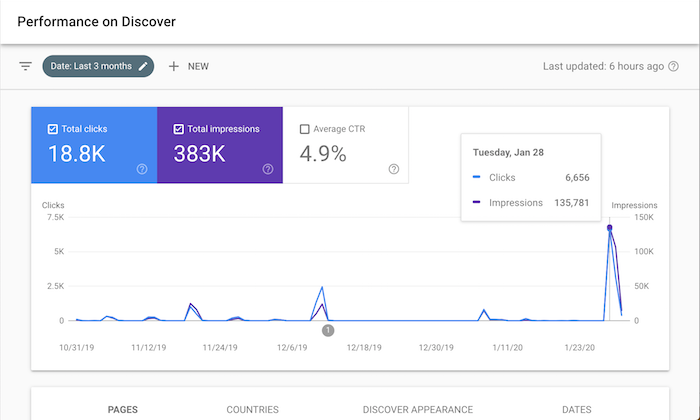
If you want to get traffic from Google, how would you go
about it?
Chances are you are either going to leverage SEO or pay for
some ads.
But what if there was another way to get traffic from Google? A way that didn’t take as long as SEO and didn’t cost money like paid ads. And no, I’m not talking about Google News… there is actually an easier way.
It’s so effective that it drove 18,800 visitors to my site in the last 3 months. Just look at the screenshot above.
So, what is it?
Similar to how you have feeds on Facebook, Instagram, and Twitter, did you know Google has a feed for you.
It’s called Google Discover.
If you mainly use Google on your laptop or desktop computer, chances are you haven’t seen it. But if you have the Google mobile app or the Chrome mobile app, you probably have already seen it.
Here’s what it looks like on an iPhone:
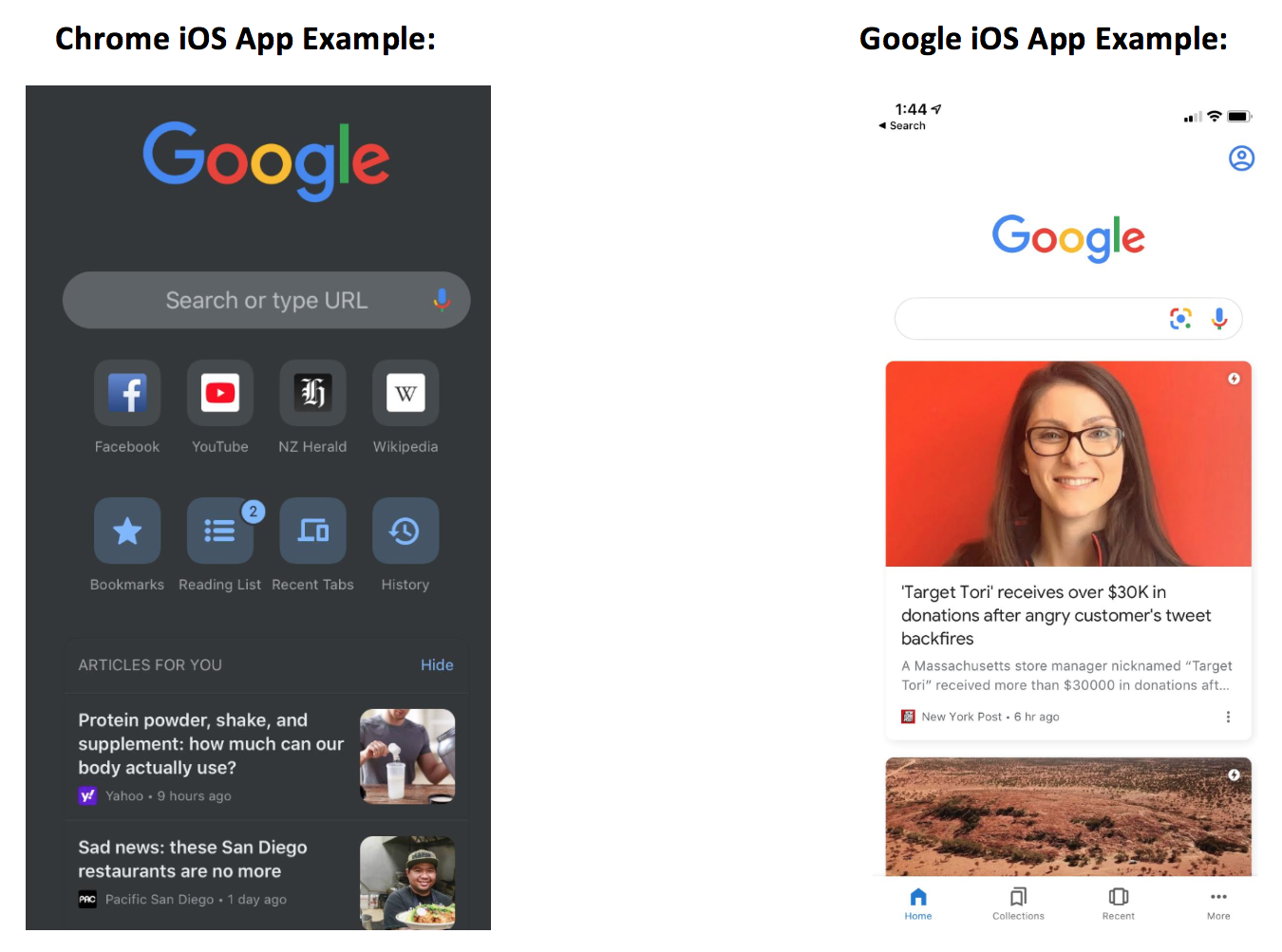
This is Google’s version of a social feed.
Here’s how it works… Google Discover results, which appear below the search box on the Google mobile app and Chrome mobile app, show a summary of web pages as cards. These cards are a scrollable list of topics, almost like a social feed, that you can browse on your mobile devices.
Tapping one of these cards from Google search home will send
you directly to the page you just clicked on.
And if you are wondering why you are seeing certain stories
that others may not be, it’s because the recommendations are based on search
history, interactions with Google products, and who you choose to follow
directly via Google Discover.
But here is where it’s getting interesting…
Discover results for some topics also appear within the
search engine results under the label “Interesting finds.”
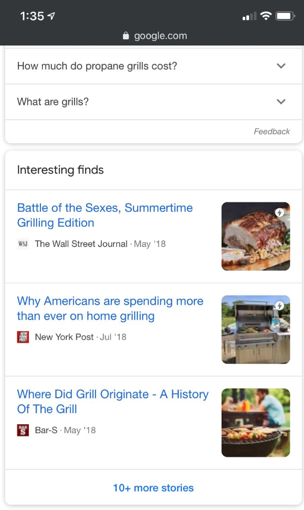
If you click one of these stories, it’ll take you directly to that web page, or, if you click to see “more stories” at the bottom of the Interesting Finds card, it’ll bring you to a new Google Discover user interface where you can follow that topic, follow related topics, and explore related Discover listings.
Now if you have a Pixel phone, you’ve seen Discover a lot, but again you just haven’t realized it.
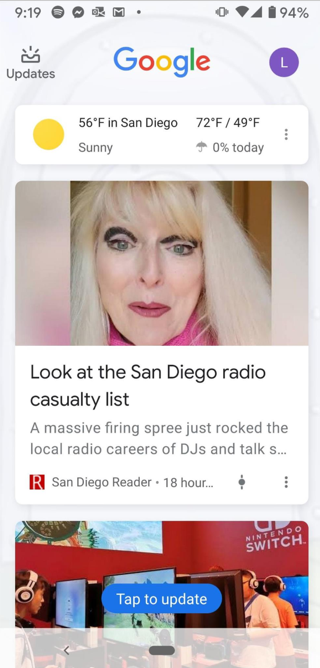
By simply swiping right on your Pixel phone home screen you
get a customizable and personalized feed just like the image above.
Now, you may be wondering, how is this different than just
using Google News? Because they have a top stories section which is kind of
like a feed, right?
Unlike top stories, Discover doesn’t limit rankings to what’s published most recently.
If Google thinks a user would find earlier content
interesting, then Discover might show it. Discover also features videos, sports
scores, entertainment updates such a movie, stock prices, event info for things
like a music festival, and much more.
Google is positioning Discover as a content hub for all of your interests just like Facebook is doing with their feed.
In other words, this is Google’s version of your Facebook
feed.
Similar to following a hashtag on Instagram, you can follow
a topic of interest on Discover. Also, similar to Instagram’s Explore Page, you
don’t need to follow anything to get content you might like. Discover is aiming
to show you content you’d be interested in before you even know you want
it.
The key is “before you knew about it.” Just like how Facebook and Instagram do the same thing.
Because it can drive you a ton of traffic.
Just check out one of the clients of my ad agency, Neil Patel Digital. Look at their Discover traffic.
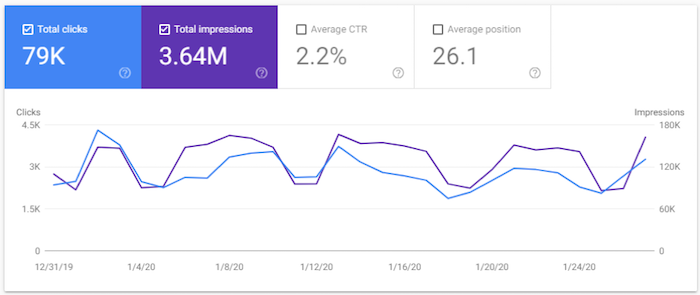
They generated 3.64 million impressions in the last 28 days
and 79,000 clicks to their site.
That’s a ton of traffic. In addition, all of those impressions help with branding.
Now you may not care about branding but the larger your
brand, the easier it is to rank on Google. Brand search volume is more correlated
with rankings than links or domain authority.
And as Google’s ex-CEO stated:
Brands are the solution, not the problem. Brands are how you sort out the cesspool.
So, all of those impressions you can generate from Discover are great because they will help put your brand out there. It helps with the concept called the Rule of 7, in which when someone sees or interacts with your brand 7 times, they are much more likely to become a loyal customer.
This can also help with Google’s E-A-T algorithm updates. It is the best way if you want to build up your expertise and credibility as an author. Discover is a simple way to help you get there.
So, how can you get more traffic from Discover?
Luckily, it’s not as complicated as SEO and the results happen
much faster. Still not instant, but over time you should see your Discover
traffic continually rising.
Here are 3 simple tips that will help:
Once you make a deliberate effort to go after Discover
traffic, it’s time to measure how you are doing.
Chances are, you use Google Analytics. But to see how well you are doing on Discover, it’s easier if you use Google Search Console.
Head over to Search Console and log in.
Now, on the left side, you’ll see a navigation menu.
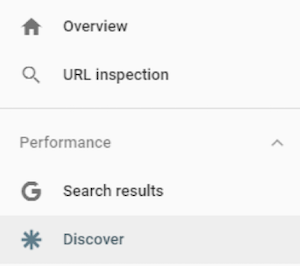
I want you to click on “Discover.” (You’ll only see this option if you hit a minimum threshold in Discover traffic)
You’ll now see a report that looks something like this.

Compared to the screenshot I showcased earlier, I barely get
any Discover traffic.
Why you may ask?
Do you notice a trend with my chart? Well, I tend to publish content every Tuesday and that’s the day I get Discover traffic.
Similar to any other social network (and unlike traditional SEO), you mainly see traffic as you post new content. It’s not long-term traffic that is consistent, instead, you keep getting quick bursts of traffic.
I only blog once a week, but if I write multiple pieces of
content a day, my Discover traffic would skyrocket.
Whether you are a fan of Discover or not, it doesn’t matter. As a marketer, you need to look at it as another channel.
Data has already shown that it is popular and as long as
Google keeps pushing it, people will use it.
So why not leverage it to your advantage and harness it to drive traffic and sales for your site?
Plus, you should never rely on traffic from just one channel alone because the moment an algorithm change happens, it can crush your traffic. That’s why you need to take an omnichannel approach and leverage any relevant channel out there.
So, what do you think of Discover? Do you use it on your
phone? Have you thought about leveraging it for traffic to your site?
The post How I Generate 18,800 Visitors from Google Without SEO or Ads appeared first on Neil Patel.
Telemundo will reveal the finalists for the 2020 Billboard Latin Music Awards on its Instagram account Wednesday at noon ET. The live event on Instagram will feature LatinX Now! host Christian Acosta and singer and composer Emilia Mernes. Finalists in 59 categories across Latin Pop, Tropical, Latin Rhythm and Regional Mexican will be revealed, along…
Is a billboard an affordable marketing tool for a design firm or copywriter? Don’t laugh it off. I spoke with Bart Bradshaw, host of the Built to Stay podcast, who educated me all about the latest in outdoor advertising. It’s not as expensive as you think and depending on your niche, it could definitely make you stand out. Listen to our companion interview on choosing a niche.
The acquisition is more about Salesforce’s ability to deliver personalized interactions than its entry into the CDP space, says one industry insider.
Please visit Marketing Land for the full article.